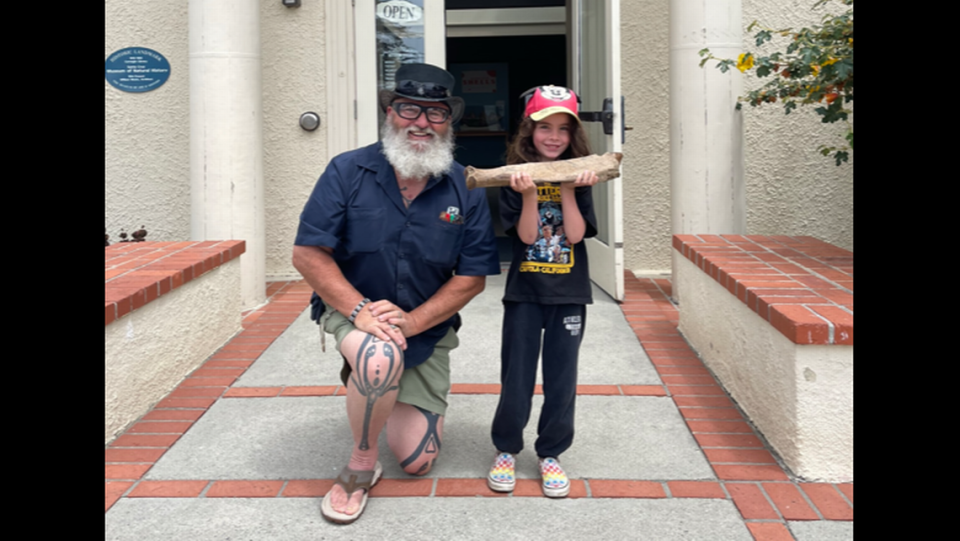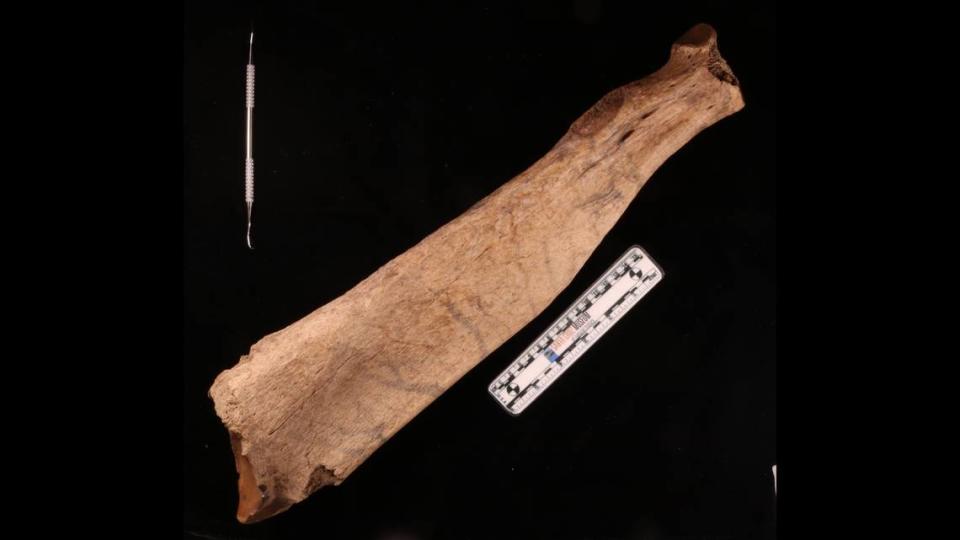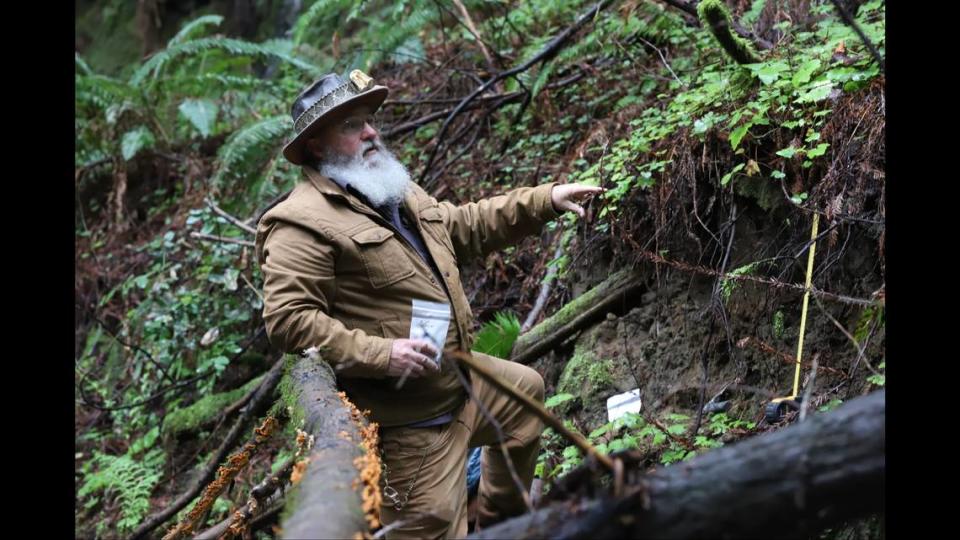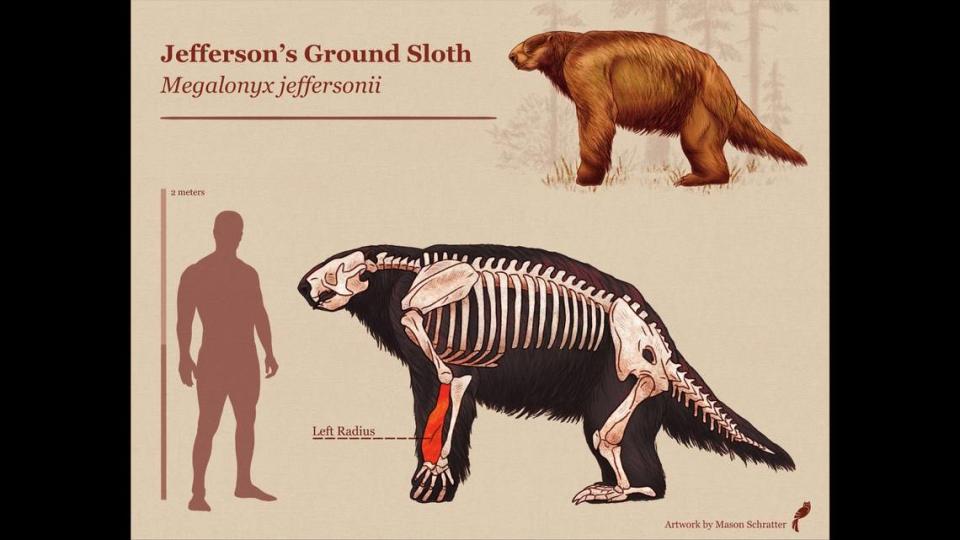Elementary school students playing in mountains stumble upon fossil of ‘iconic’ mammal
- Oops!Something went wrong.Please try again later.
Unbeknownst to a group of California elementary school students, what started out as a field trip to the mountains would soon turn into the discovery of a lifetime.
Last spring, as the Tara Redwood School students “were playing in the Santa Cruz Mountains,” they found a “strange object,” the Santa Cruz Museum of Natural History said in a March 20 news release.
Bryn Evans, the teacher chaperoning the students, told KSBW Action News 8 the kids “were building a dam, looking for crawdads.”
“They’re just in the mud pulling things out and then one of them comes up and is like, ‘This isn’t a stick, this is a bone!’” Evans told the outlet.
The children thought it was a bone of a large animal, the museum said.
That object, it turns out, was a bit more unique.
The students brought their find to Wayne Thompson, a paleontologist with the museum, who confirmed it was the fossil of an ancient sloth.

“Megalonyx jeffersonii is one of the very first fossils documented in North America,” Melissa Macias, a paleontologist and ground sloth expert, said in the release. “It’s just one of those iconic animals that more people should know about.”
This is the first time a fossil for this species has ever been found in Santa Cruz County, the museum said.
“Fossils are a great way to engage people with the deep past,” Felicia Van Stolk, the museum’s executive director, said in the release, “and we’re so excited that young students made this important discovery that will continue to inspire generations of museum visitors and scientists.”

While the museum is working to date the fossil, the museum said it knows the specimen “was found in an Ice Age sediment deposit, placing it in a ballpark of between 11,500 years and 300,000 years old.”
This fossil find follows the discovery of a mastodon tooth on Rio Del Mar Beach last June.
“Both of these fossils are from the same era and their discoveries increase our understanding of what this region would have looked like in the Pleistocene,” the museum said.
A ‘rare’ find
Though the species’ remains “are commonly found in the western United States,” the museum said it is rare they are discovered in California.

If the mammal’s fossils are found in the state, the museum said they are typically unearthed in Shasta and Los Angeles counties.
In addition to being the first fossil of the species found in Santa Cruz County, the museum said it is “one of the few confirmed specimens in” the state.
What to know about Jefferson’s ground sloths
Jefferson’s ground sloths went extinct about 11,000 years ago, the museum said, adding that “scientists are still investigating the cause.”
Megalonyx belongs to a family group of sloths that are believed to have “emerged in South America about 30 million years ago,” the museum said.
From there, the museum said the species migrated to North America “as early as 8 million years ago by crossing the Isthmus of Panama Land Bridge.”

During the Ice Age, the museum said different species of sloths resided across North and South America and were “hunted by Indigenous people.”
The herbivores were “comparable to an ox in size,” growing up to 3 meters long and weighing between 2,200 and 2,425 pounds, the museum said. The creatures could grow to be nearly 10 feet tall, according to the University of Iowa Museum of Natural History.
The creatures lived in “woodlands and forests near rivers and lakes” and “used caves for shelter,” the museum said.
They used their sharp claws, foraging for food, the museum said.
Jefferson’s ground sloths are a distant cousin to today’s sloths that live in Central and South America, according to the museum.
The species is named after the country’s third president, Thomas Jefferson, who was the first to identify the sloth in North America, according to the Houston Museum of Natural History. Jefferson initially thought the bone was that of a tiger or large cat.
Fossil on exhibit
The fossil, along with a Mason Schratter illustration of the mammal amidst “the Santa Cruz landscape in the Pleistocene era,” will be on display during the museum’s annual exhibit of science illustration, The Art of Nature, from March 23 to May 26.
Following the exhibit, the museum said the fossil will be stored among the museum’s collections and be available for future research.
Runner didn’t know he nabbed ‘invaluable’ find on CA beach — until turning on the news
9-year-old thought he found a ‘plastic container.’ It was actually a mammoth tooth
‘Once in a lifetime find,’ Boy finds massive, extinct shark tooth on SC vacation. Check it out

